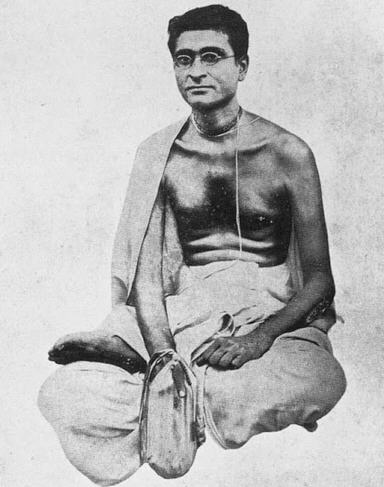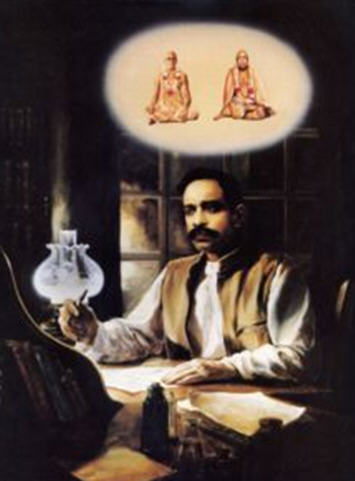
Chaitanya Charitamrita Madhya lila 9.180
kritamalayasnanakari’ ailatanraghare
bhikshakidibenavipra, — pakanahikare “After bathing in the river Kritamala, Sri Caitanya Mahaprabhu went to the brahmana’s house to take lunch, but He saw that the food was unprepared because the brahmana had not cooked it.”
Madhya 9.197 tanreasvasiya prabhukarilagamana kritamala yasnanakariaila durvasana “After thus assuring the brahmana, Sri Caitanya Mahaprabhu proceeded further into southern India and finally arrived at Durvasana, where He bathed in the river Kritamala.”
PURPORT :
Presently the Kritamala River is known as the river Bhagai or Vaigai. This river has three tributaries, named Suruli, Varaha-nadi and Battilla-gundu. The river Kritamala is also mentioned in Srimad-Bhagavatam (11.5.39) by the sage Karabhajana.”
The Krtamala River is made famous in sastra from very ancient days, long before the advent of Sri Caitanya Mahaprabhu. For example, Krtamala-theertham features prominently in the story of Matsya Avatara. It was the holy Krtamala in which Satyavrata was offering oblations when a small fish swam into his cupped hands. This pastime is nicely summarized:
“During the Caksusa-manvantara, a devotee of Lord Narayana named King Satyavrata performed severe austerities by drinking only water. One day, Satyavrata was offering oblations in the Krtamala River when he saw a tiny fish in the water cupped in his palms. Satyavrata, the king of Dravida, threw the fish into the water. The small fish then said in great distress, “O merciful king! I am a small fish; big fish will eat Me. Knowing this, why did you throw Me into the river? I am very scared. Please protect Me.” Hearing the distressful words of the fish, the king placed the fish in his water pot and went back to his asrama. Within one night, the small fish grew so much that it was difficult for it to remain in the water-pot. The fish again offered prayers expressing that it did not want to remain in that difficult condition. It wanted to be kept in a bigger pot where it could move about freely; so the sage put the fish into the water of a big wok. But in that place, within one muhurta (forty-eight minutes), it again expanded to the length of three hands.
Upon the repeated prayers of the fish, it was placed in a pond, then a large freshwater lake, and finally the ocean. While entering into the ocean, the fish spoke to King Satyavrata in a humorous way, “There are many large crocodiles and other creatures in the ocean; they will eat Me. It is not proper to leave Me here.” Hearing the sweet words of the fish, the king understood that it was not an ordinary fish. This wonderful entity was the Supreme Lord Himself in the form of a fish. The king replied, “You are making fun of me in Your form as a fish. Who are You actually? Within one day You have occupied the entire area of this huge freshwater lake, 800 miles long. I have never seen or heard of such an amazing and powerful aquatic. You must surely be the Supreme Lord Hari. You have taken the form of an aquatic to favor all the living beings. I am taking shelter of You. Please grace me.”
The evidence of the Puranas definitely locates the Kul-acala or Kula-parvata (literally, a mountain associated with certain tribes) called Malaya, which was the source of the Tamraparni and Krtamala (Vaigai) rivers running through the Pandya country, at the extreme southern end of the Western Ghats.”
As was the case with Lord Caitanya’s pastimes at the River Kaveri, where Lord Balarama also visited, in the case of the Krtamala River we find that Lord Balarama also took bath here:Srimad-Bhagavatam 10.79.16-17: “There at Setubandha (Ramesvaram) Lord Halayudha gave brahmanas ten thousand cows in charity. He then visited the Krtamala and Tamraparni rivers and the great Malaya Mountains. In the Malaya range Lord Balarama found Agastya Rsi sitting in meditation. After bowing down to the sage, the Lord offered him prayers and then received blessings from him. Taking leave from Agastya, He proceeded to the shore of the southern ocean, where He saw Goddess Durga in her form of Kanya-kumari.”
And just as the Sri Balabhadra-sahasra-nama gives the Kaveri as one of Lord Balarama’s names, so, too, He is named for the holy Krtamala in ‘Sri Balabhadra-sahasra-nama – A Thousand Names of Lord Balarama’, which Garga Muni gave to the gopis on the beautiful bank of the Yamuna River:
Text 61
krtamalamaha-punyakaveri ca payasvini praticisuprabhave nitrive nisarayupama “He is the Krtamala, Maha-punya, Kaveri, Payasvini, Pratici, Suprabha, Veni, Triveni, and Sarayupama rivers.” Details of Nityananda Prabhu’s pastimes at the Krtamala are also found, in CaitanyaBhagavataAdi-lila 9: ” From there he went to Hari-ksetra, and then visited Mount Rsabha. Then he travelled to South Matura, Krtamala, Tamraparni, and then journeyed northward to the Yamuna, where he visited the home of Agastya on Malaya mountain.”


